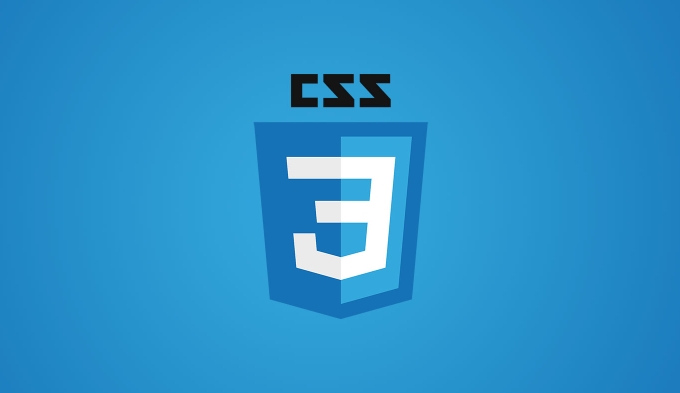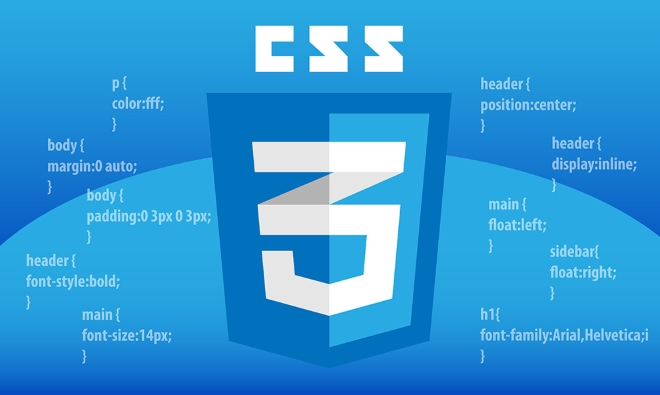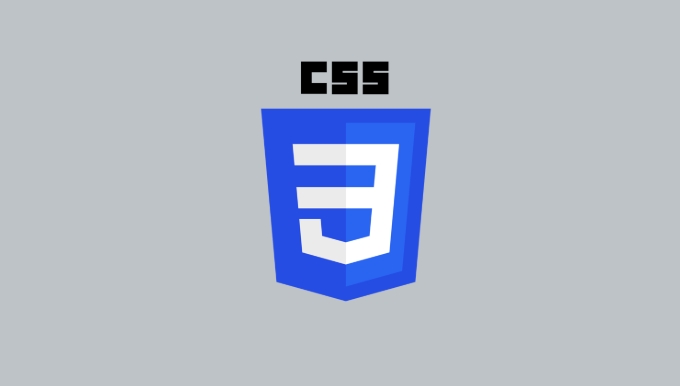CSS Grid is a powerful 2D web layout tool suitable for handling complex page structures. 1. To define the Grid container, you need to set display: grid; 2. Use grid-template-columns and grid-template-rows to set the column and row size; 3. Position sub-items through grid-column and grid-row or span keywords; 4. Use grid-template-areas to name areas to simplify complex layouts; 5. Use gap attributes to control spacing; 6. Automatically add new rows through grid-auto-rows; 7. Use media queries to achieve responsive adjustments, mastering these key points can effectively build modern web layouts.

CSS Grid is a very powerful tool in modern web layouts, which gives developers more flexibility to control two-dimensional layouts (rows and columns). If you are still using floating or flexbox to make complex page structures, it's really time to try Grid. It is not a replacement for Flexbox, but is more suitable for handling multi-dimensional layout scenarios.

Here are some questions and practical suggestions that you may be concerned about to help you get started with CSS Grid quickly.

How to define a Grid container
To use Grid, the first step is to turn an element into a "Grid container". Just add display: grid; to this element.
.container {
display: grid;
}Once set to the Grid container, all its direct child elements will automatically become Grid items, and you can start defining their location, size, etc.

A common practice is to set the size of columns and rows first, such as:
.container {
display: grid;
grid-template-columns: 200px 1fr 2fr;
grid-template-rows: auto 100px;
}The above code means: the first column has a fixed width of 200px, the second column has a proportion of 1, and the third column has a proportion of 2. There are two rows in total, the first row has a height adaptive content, and the second row has a fixed 100px.
How to locate Grid children
One of the big advantages of Grid is that it can accurately control the position of each child. You can specify which lines they span through grid-column and grid-row .
For example:
.item1 {
grid-column: 1 / 3;
grid-row: 1 / 2;
} This means that .item1 starts from the first vertical line, spans to the third line (that is, occupying two columns), and is displayed on line 1.
You can also use span abbreviation method:
.item1 {
grid-column: 1 / span 2;
} If you write this way, no matter how many columns there are at the end, .item1 will occupy two column widths.
Simplify layout with named areas
For more complex layouts, such as the header, sidebar, main content area, and bottom area, you can use grid-template-areas to name the area and then reference it in the child item.
Example:
.container {
display: grid;
grid-template-columns: 200px 1fr;
grid-template-rows: 80px 1fr 60px;
grid-template-areas:
"sidebar header"
"sidebar main"
"sidebar footer";
}
.header {
grid-area: header;
}
.sidebar {
grid-area: sidebar;
}The advantage of this method is that it is clear logic, which is especially suitable for switching layouts when doing responsive design.
FAQs and tips
How to add spacing?
You can usegapattribute to set the spacing between rows and columns, such as:.container { gap: 20px 30px; /* Row spacing 20px, column spacing 30px */ }What should I do if I add a new line automatically?
If you do not want to manually define each row, you can set the default row height withgrid-auto-rows:.container { grid-auto-rows: minmax(100px, auto); }How to adjust responsively?
The easiest way is to cooperate with media queries to change the value ofgrid-template-columnsto achieve different column counts or widths under different screen sizes.
Basically, that’s all. By mastering these key points, you can make a very complex web page layout. Grid is not difficult, but it does require understanding some new concepts and attributes. It may feel a little confused at first, but you can get started quickly with just a few trials.
The above is the detailed content of CSS Grid layout tutorial explained. For more information, please follow other related articles on the PHP Chinese website!

Hot AI Tools

Undress AI Tool
Undress images for free

Undresser.AI Undress
AI-powered app for creating realistic nude photos

AI Clothes Remover
Online AI tool for removing clothes from photos.

Clothoff.io
AI clothes remover

Video Face Swap
Swap faces in any video effortlessly with our completely free AI face swap tool!

Hot Article

Hot Tools

Notepad++7.3.1
Easy-to-use and free code editor

SublimeText3 Chinese version
Chinese version, very easy to use

Zend Studio 13.0.1
Powerful PHP integrated development environment

Dreamweaver CS6
Visual web development tools

SublimeText3 Mac version
God-level code editing software (SublimeText3)

Hot Topics
 What is 'render-blocking CSS'?
Jun 24, 2025 am 12:42 AM
What is 'render-blocking CSS'?
Jun 24, 2025 am 12:42 AM
CSS blocks page rendering because browsers view inline and external CSS as key resources by default, especially with imported stylesheets, header large amounts of inline CSS, and unoptimized media query styles. 1. Extract critical CSS and embed it into HTML; 2. Delay loading non-critical CSS through JavaScript; 3. Use media attributes to optimize loading such as print styles; 4. Compress and merge CSS to reduce requests. It is recommended to use tools to extract key CSS, combine rel="preload" asynchronous loading, and use media delayed loading reasonably to avoid excessive splitting and complex script control.
 External vs. Internal CSS: What's the Best Approach?
Jun 20, 2025 am 12:45 AM
External vs. Internal CSS: What's the Best Approach?
Jun 20, 2025 am 12:45 AM
ThebestapproachforCSSdependsontheproject'sspecificneeds.Forlargerprojects,externalCSSisbetterduetomaintainabilityandreusability;forsmallerprojectsorsingle-pageapplications,internalCSSmightbemoresuitable.It'scrucialtobalanceprojectsize,performanceneed
 Does my CSS must be on lower case?
Jun 19, 2025 am 12:29 AM
Does my CSS must be on lower case?
Jun 19, 2025 am 12:29 AM
No,CSSdoesnothavetobeinlowercase.However,usinglowercaseisrecommendedfor:1)Consistencyandreadability,2)Avoidingerrorsinrelatedtechnologies,3)Potentialperformancebenefits,and4)Improvedcollaborationwithinteams.
 CSS Case Sensitivity: Understanding What Matters
Jun 20, 2025 am 12:09 AM
CSS Case Sensitivity: Understanding What Matters
Jun 20, 2025 am 12:09 AM
CSSismostlycase-insensitive,butURLsandfontfamilynamesarecase-sensitive.1)Propertiesandvalueslikecolor:red;arenotcase-sensitive.2)URLsmustmatchtheserver'scase,e.g.,/images/Logo.png.3)Fontfamilynameslike'OpenSans'mustbeexact.
 What is Autoprefixer and how does it work?
Jul 02, 2025 am 01:15 AM
What is Autoprefixer and how does it work?
Jul 02, 2025 am 01:15 AM
Autoprefixer is a tool that automatically adds vendor prefixes to CSS attributes based on the target browser scope. 1. It solves the problem of manually maintaining prefixes with errors; 2. Work through the PostCSS plug-in form, parse CSS, analyze attributes that need to be prefixed, and generate code according to configuration; 3. The usage steps include installing plug-ins, setting browserslist, and enabling them in the build process; 4. Notes include not manually adding prefixes, keeping configuration updates, prefixes not all attributes, and it is recommended to use them with the preprocessor.
 What are CSS counters?
Jun 19, 2025 am 12:34 AM
What are CSS counters?
Jun 19, 2025 am 12:34 AM
CSScounterscanautomaticallynumbersectionsandlists.1)Usecounter-resettoinitialize,counter-incrementtoincrease,andcounter()orcounters()todisplayvalues.2)CombinewithJavaScriptfordynamiccontenttoensureaccurateupdates.
 CSS: When Does Case Matter (and When Doesn't)?
Jun 19, 2025 am 12:27 AM
CSS: When Does Case Matter (and When Doesn't)?
Jun 19, 2025 am 12:27 AM
In CSS, selector and attribute names are case-sensitive, while values, named colors, URLs, and custom attributes are case-sensitive. 1. The selector and attribute names are case-insensitive, such as background-color and background-Color are the same. 2. The hexadecimal color in the value is case-sensitive, but the named color is case-sensitive, such as red and Red is invalid. 3. URLs are case sensitive and may cause file loading problems. 4. Custom properties (variables) are case sensitive, and you need to pay attention to the consistency of case when using them.
 What is the conic-gradient() function?
Jul 01, 2025 am 01:16 AM
What is the conic-gradient() function?
Jul 01, 2025 am 01:16 AM
Theconic-gradient()functioninCSScreatescirculargradientsthatrotatecolorstopsaroundacentralpoint.1.Itisidealforpiecharts,progressindicators,colorwheels,anddecorativebackgrounds.2.Itworksbydefiningcolorstopsatspecificangles,optionallystartingfromadefin






